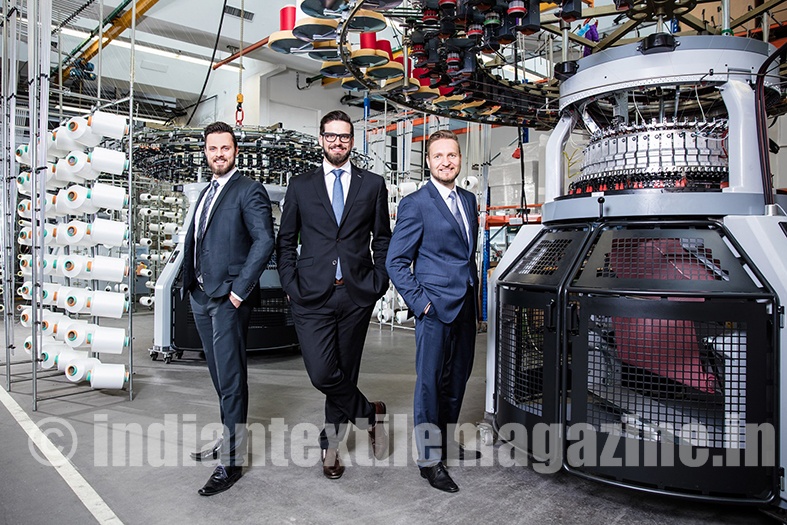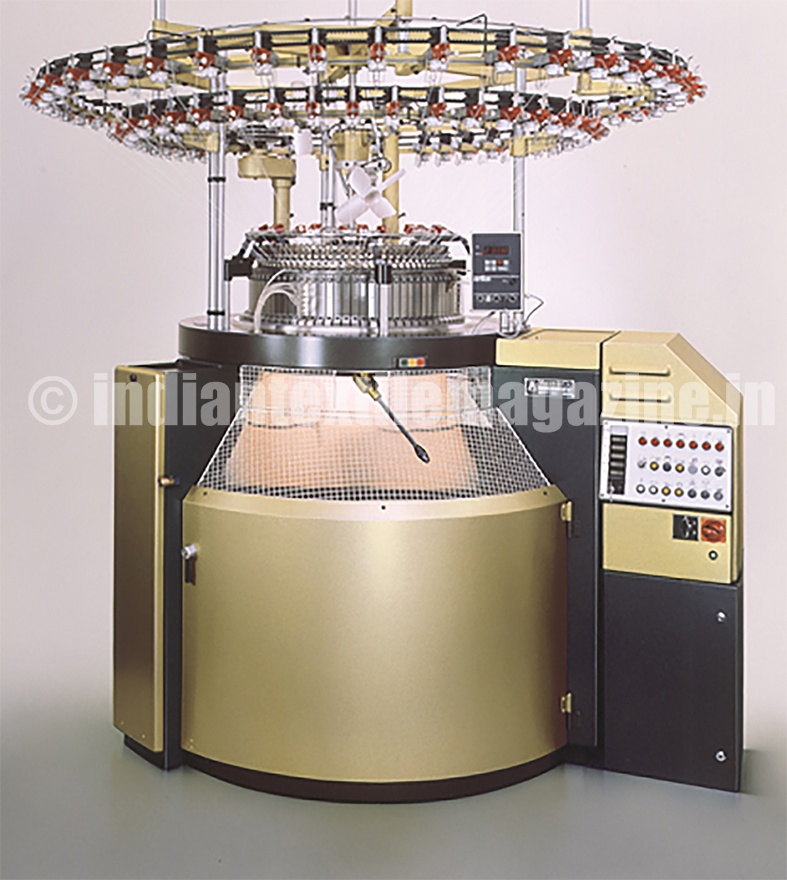Mayer & Cie. (MCT) currently has about 50 machines in a product portfolio that offers the full range of machines required to manufacture modern textiles. More than 30 per cent of Mayer & Cie.’s circular knitting machines have been around for six years. They include the Relanit 3.2 HS, which sets yet more standards in its category. At the same time, 60 per cent of the machines the company has ever sold are still in the market. That means 42,000 knitting machines with the green Mayer logo on which knitters all over the world rely.
A quality promise
A company release states: “Our circular knitting machines offer you a means of production that fulfils the highest demands. They are not just ‘knitting machines’ but new machines painstakingly designed from scratch in years of hard work using the latest technology and manufactured by the most highly skilled personnel.”

Reading like a quality promise from any current sales prospectus, these words are in reality nearly 80 years old. The statement dates back to 1938 and is taken from one of Mayer & Cie.’s first circular knitting machine brochures. “Today as back then, our aim is to offer our customers optimal machines,” says Mayer & Cie. Managing Director Marcus Mayer. “To quote my late uncle, Rainer Mayer, ‘We sell customer success and not just knitting machines’.”
For its customers’ success Mayer & Cie. currently has on offer a product portfolio of about 50 machines. With this, Mayer & Cie. covers the entire range of machines required for manufacturing modern textiles. Fabrics for household textiles, sportswear, nightwear and swimwear, seat covers, underwear and technical textiles are all knitted on MCT machines.
Just over one in three of the machines in the Mayer & Cie. portfolio have only been on offer since 2010 at the earliest. For single machines the proportion is even higher: over 40 per cent have been around for six years or less. In addition there have been continuous improvements to the existing machines. Further development has also constantly benefited central components such as the drive unit, cam parts or the oiler. The improvements include energy benefits. The latest Relanit machine uses about 30 per cent less energy than a conventional knitting machine.
Machines knit for longer duration
The OVJA 36, launched at ITMA 1967 in Basle, was the first double piqué Jacquard machine capable of  manufacturing Jacquard-patterned yard goods up to a fineness of E 24. The loop structure that it delivered was significantly more closely knitted than had previously been possible. Threads that were not looped on the front were no longer to be seen in the pattern. This machine quickly became the “knitters’ favourite” and about 7,000 were sold. Customers were prepared to wait for up to three years for the machine. The OVJA 36 became world-famous and remains legendary to this day.
manufacturing Jacquard-patterned yard goods up to a fineness of E 24. The loop structure that it delivered was significantly more closely knitted than had previously been possible. Threads that were not looped on the front were no longer to be seen in the pattern. This machine quickly became the “knitters’ favourite” and about 7,000 were sold. Customers were prepared to wait for up to three years for the machine. The OVJA 36 became world-famous and remains legendary to this day.
Since they were launched in 1987 the popularity of Relanit machines has been unbroken. Around 10,000 have been sold, which amounts to one in seven Mayer machines ever sold. In a single machine with relative technology the distance the thread travels is halved because needle and sinker move toward each other. As a result there are fewer turning points for the yarn, which in turn leads to fewer sources of error.
Even though the relative technology patent expired in 2003 it has yet to be imitated, and that cannot be because the machines are unpopular. The current model, the Relanit 3.2 HS, can be relied upon to attract attention at any trade fair and is one of the best sellers in the Mayer & Cie. range.
Sixty per cent of all MCT circular knitting machines ever sold are still in the market. With more than 70,000 machines sold to date, that means about 42,000 Mayer machines around the world are still knitting. Statistically, they should include 6,000 Relanit machines and over 4,000 OVJA 36s.
“Another interesting fact is that machines which went unnoticed for a few years suddenly become popular once more when somebody discovers a new use for them,” Marcus Mayer says. “But that only works because the machines are so well engineered that even after 10 years they are anything but any old iron. The MCPE 2.4 is a current example of a ‘rediscovery’ of this kind.”
An electronic machine, it produces Jacquard plush fabrics in up to 12 colours. It knits any design it is given as a free design or draft. Today the machine is used in the household textiles segment. After long years of a lull in demand it was on show once more at ITMA 2015.